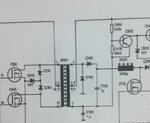ramu651971
Newbie level 3
Hi All,
I am looking for a low constant current source,the requirement is
DC volts 18 35 75 125 150 200
Milli amps 0.5 1 2 5 10 20
Can anyone help me how to proceed?
Requirement is for Resistivity meter for ground water exploration
Regards,
Ramu
I am looking for a low constant current source,the requirement is
DC volts 18 35 75 125 150 200
Milli amps 0.5 1 2 5 10 20
Can anyone help me how to proceed?
Requirement is for Resistivity meter for ground water exploration
Regards,
Ramu
Last edited:
